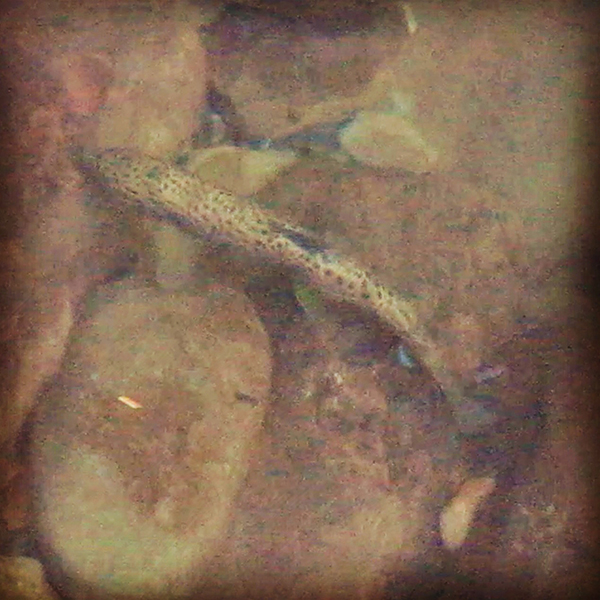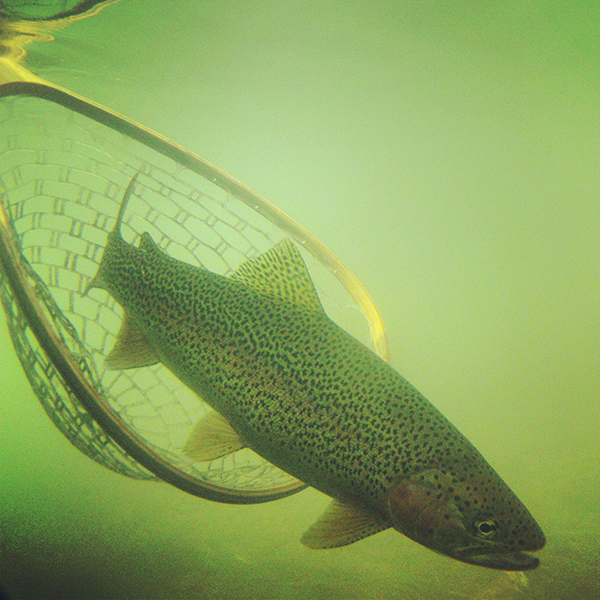So far the hottest weather we’ve seen this year has come in September just about the time we expect to start getting a break from the heat. August was relatively mild with temperatures rarely getting out of the 80’s and several days that were very mild. In spite of the heat we’re getting regular fresh shots of water in the mountain streams from regular afternoon thunderstorm activity.
The fish are eating dry flies better than nymphs on most days. However, expect weather conditions to be a factor. The more stable the weather is, the better you can expect the fishing to be. The fish always seem to be less aggressive when the weather starts changing suddenly as thunderheads boil up overhead.
The tailwater situation around East Tennessee is excellent, especially when you consider that September is one of the least predictable months from one year to the next. This is the time of year when TVA begins to lower the reservoirs and that means higher flows from the dams. Water levels remained pretty low in the Clinch and Holston River systems this year so there isn’t so much water to move out as usual. This past week we saw good fishy flows on the Clinch and Holston Rivers. The South Holston has been more favorable for floating lately than wading, but keep an eye to TVA schedules since there are wadeable windows. Same thing goes for the Watauga.
This is the time of year when we see a lull in hatch activity on the tailwaters. This week we saw a smattering of midges, Sulphurs, and black caddis on the Clinch while we saw just a very few caddis and crane flies on the Holston. Nymphing is the name of the game, but it has been pretty good.


Brett Winchel says
Only my second time fishing the clinch yesterday morning and caught myself right in the middle of a hatch, think it was midge or black caddis. Either way they didn’t touch a thing I was throwing at them. Perhaps it could have been the change in weather yesterday morning. It was a bit cooler and overcast early before the sun broke out and it got hot again around noon. Still trying to get a feel for this river, as I have been used to fishing the Caney Fork all summer. Any tips or bits of advice would be greatly appreciated. Thanks for the recent report, one of few I could find that was within the last couple weeks.
Ian says
Brett,
You likely saw both as there are almost always midges hatching but there are some small black caddis out there as well right now and they’ll be through the fall.
I don’t know what you’ve been doing, where you’ve been fishing, or what flies you’ve been using but you should be thinking small nymphs. About #18 is standard with smaller for times when the fish are on midges. Spartan flies without much to them are often the best. Zebra midges along with the most plane Jane Pheasant Tail Nymph you can find are probably the top flies to keep on hand. Black beads can also make a difference in sections of the river where fish are most pressured.
Use a discreet strike indicator that comes to the water very lightly. A little bit of indicator yarn is about the best thing since it doesn’t plop like Thingmabobbers or foam footballs.
The last thing I can say is pretty standard fare for the Clinch. It has a real tendency to either be “on” or “off”. With some time on the water and greater familiarity you’ll be able to make something work most days, but it can be the “Grinch” on some days. The water is always very cold so the fish metabolism is always pretty slow on this river. That means they don’t have to eat as much as on warmer rivers where wet wading is comfortable. While the bugs are tiny, they are plentiful in the Clinch so the fish are pretty healthy. These factors also make it so the fish may not eat much at all for part of the day but pack much of their feeding into a few hours of the day.
It always helps to know the river and have a spot or two in your back pocket, for a slow day, but you’ll likely do better with more time on the water.
Good Luck,
Ian